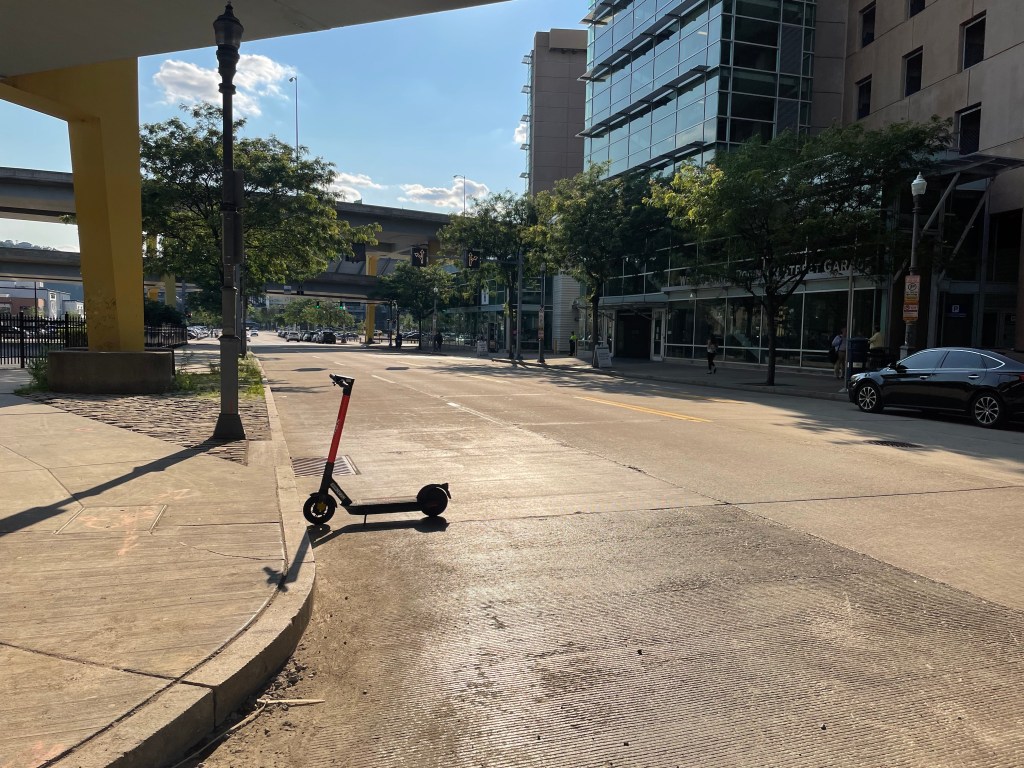It is worth beginning with a note that I am terribly risk averse, and therefore … not a ton of fun. When Ford micromobility subsidiary Spin first launched a fleet of electric scooters in my hometown of Pittsburgh last summer, my immediate instinct was very old-man-yells-at-cloud.
Youths took over the streets and sidewalks, racing around downtown and the North Shore on the orange scooters. In the hillier parts of the city — in case you don’t know anything about Pittsburgh, that’s most of the city — they were a stationary menace, abandoned on sidewalks, under bridges and in the middle of alleys.
I wrote off the Spin scooters as an inevitable consequence of city living and vowed to avoid the cursed conveyances. Around the same time, two things happened: I started editing a lot of Rebecca Bellan’s contributions to TechCrunch, and I began dating a guy who swears scooters are fun.
Founders of micromobility startups made plenty of good arguments for why fleets of electric scooters and bikes make sense. First and foremost, they are not cars, which is great for improving air quality and ameliorating rush-hour traffic. They can aid in solving the “last-mile problem” — getting people from the last stop on the subway or bus line to their home or work. They’re in theory more affordable than owning a car or even hailing a taxi or an Uber, solving obvious equity issues for low-income individuals.
I wasn’t buying it — they struck me as dangerous, rickety and unsustainable on multiple levels. Venture capitalists disagreed, dumping millions into the likes of Bird and Lime.
If you’ve been reading TechCrunch, you know what happened next.
Bird SPAC’d and promptly crashed in November 2021. It was trading around 49 cents a share as of Friday morning. Lime raised millions and announced plans to IPO in the same month, then disappeared as markets tumbled.
In the meantime, I came around.
A few weeks ago, the aforementioned boyfriend and I took the T, Pittsburgh’s lone subway line, from his home in the southern suburbs to the North Shore.
“It’s fun,” Brandon said again as we grabbed a bite on a patio near the Allegheny River as youths zoomed past on Spin scooters.
“I can’t feel my legs,” I countered. And that is true — I have multiple sclerosis, and my only major symptoms are a loss of sensation and fatigue in my lower extremities. One valid criticism of micromobility is that it’s often unsuitable for many (though not all) people with disabilities.
“Let’s just try it out,” Brandon suggested gently, motioning to the smooth brick walkway designed for pedestrians and bikes. “If you hate it, we won’t go any farther.”
I relented, certain the instability in my legs would render this experiment pointless.
I’m now going to say something I don’t love to say: I was wrong. The scooter was sturdy and easy to maneuver, and the platform was wide enough for me to firmly plant both of my feet. (We stuck to the flattish areas of town, which have bike lanes on most streets, keeping us largely out of traffic and — as required — off sidewalks. I’m not sure I’d feel so secure amid traffic.)
After we successfully scooted from the North Shore to Heinz Hall downtown, we continued up to the Strip District for dinner before scooting back to the North Shore to catch the T back home, a total of nearly four miles. Could I have walked it? Probably. But I can certainly go farther on a scooter than I can on my own two feet. I admit it; it was fun, and the scooters have utility in cities like Pittsburgh with its fragmented public transportation. But it cost around $40 to rent two scooters to go about four miles. That hardly makes the case that they’re more economical for riders than public transit or a ride-share.
It’s worth noting that Pittsburgh’s not the only city that’s had issues with electric scooters: Batteries caught fire in New York; officials in Rome reported low adoption and significant injuries; Chicago residents expressed concerns following pilot programs by Bird and Lime; and Paris threatened to ban electric scooters after a pedestrian was struck and killed last summer.
So what’s it going to take for micromobility to be a worthy addition to the patchwork of ways people get around? I’d argue it’s decisive federal action, and big, bold government investment into not just micromobility but all means of public transportation. (I mean, this is true of pretty much everything: ending gun violence, halting climate change, feeding the world’s 8 billion people, educating our youth, providing adequate and dignified health care. You know, the big stuff.)
Without that sort of investment, it’s unlikely micromobility will be a suitable addition to the ideal transportation mosaic that gets everyone, regardless of disability or socioeconomic status, from point A to point B. It’ll only be fun.






























Comment